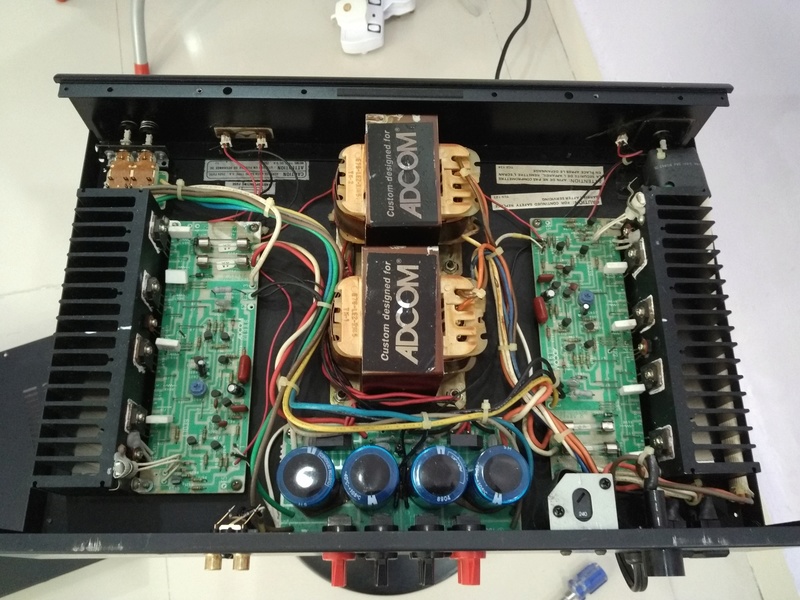- Thread Starter
- #61
That was one dirty PC and he's for sure gettin it clean.
I will even be Corona virus free now.
That was one dirty PC and he's for sure gettin it clean.
Demineralized water would be important for ensuring a clean circuit, but water on electronic components is usually a bad idea. Water corrodes metal and gets into small places, where air does not dry it well.Demineralized water (don't know if that's the English term) could be an idea...
It's what i did a few years ago. Went to the 3 local Lowes with my ohmmeter, and cherry picked a well stocked 16ohm, 3500W, water heater element.https://www.prosoundtraining.com/2011/08/09/dummy-load-testing-large-amplifiers/
I've always intended to make one of these.
You sent it out for service or are servicing it yourself? It appears to be a pretty simple layout and design...I still have a 535 in service.

You sent it out for service or are servicing it yourself? It appears to be a pretty simple layout and design...

Sure, 3 x 545 IIs and 2 x 535 IIs for my 5.2.4 multich rig. The 545s power the 5 base channels and the 535s the Atmos ceiling channels.Sal, are you still using those Adcom amps? I still have a 535 in service.
The only service mine have required is the biasing and offset checks I've done myself.You sent it out for service or are servicing it yourself?
Wasn't that the one that got stuck with a bad run of cap's that failed all over the place?Their GFP-565 is another thing—that one needs a visit to the bench.
The thermal conductivity of transformer oil is really bad like air. Air is an insulator, so that is why the dummy loads heat up instead of spreading the heat into the air more effectively.And dummy loads for ham radio often submerge a 50-ohm power resistor in a paint can filled with transformer oil. My “Cantenna” was one such. Using an 8-ohm power resistor would work, too.
The thermal conductivity of transformer oil is really bad like air. Air is an insulator, so that is why the dummy loads heat up instead of spreading the heat into the air more effectively.
It is better to place the dummy loads on aluminum and even steel than other materials that are generally available to individuals, so it makes sense to use the metal chassis, or for example cooking pots.
Yes, but that was just one batch and mine don’t seem to be suffering from that. But even if I replaced them, I’d want to perform the adjustments in the service manual again.Sure, 3 x 545 IIs and 2 x 535 IIs for my 5.2.4 multich rig. The 545s power the 5 base channels and the 535s the Atmos ceiling channels.
The only service mine have required is the biasing and offset checks I've done myself.
Wasn't that the one that got stuck with a bad run of cap's that failed all over the place?
The issue is conductivity due to how hard it is to know how hot the dummy loads actually are in oil or water, unless they are touched directly or have a thermometer connected directly to their chassis. This could lead to overheating or soakage problems that are not durable for dummy loads.The issue isn’t conductivity so much as thermal mass—a gallon of oil has a lot of it. But these are proven devices for short-term testing of thousand-watt RF transmitters, and they are not expensive.
But those water heater elements are rated at 4000 watts when submerged in water, though at that consumption they will make the water hot after a while (which is rather the point). But they are extremely durable in that application, especially for intermittent use.
Rick “who has dumped 600 watts into a Cantenna for minutes at a time” Denney
